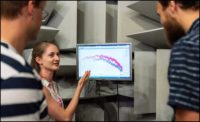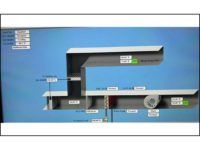As discussed in my last three columns (February, March, and April 2021), there are a number of retro-commissioning activities that can be completed remotely. However, there is much to be learned from seeing, touching, and hearing the equipment and components operating inside a building. This is when, under normal circumstances, a building owner may have an outside commissioning professional perform a walkthrough.
When travel restrictions, corporate policy, or budget constraints limit the ability of the commissioning professional to physically make a site visit, there are some things to address before considering a virtual site visit.
First, there needs to be someone who is physically in the building during the site visit. This would typically be the building engineer/operator but could be anyone willing to follow directions, get a little dirty, and help photo document the findings. For example, Questions & Solutions Engineering Inc. has successfully worked with an office manager who had a good attitude and a willingness to learn.
Once the on-site person is identified, the commissioning professional needs to develop a plan that is customized to the building systems and the on-site person’s background and knowledge base. Preparing to guide an office manager through mechanical systems will be different than preparing to guide a building operations and maintenance (O&M) engineer.
Well ahead of the planned virtual walkthrough, determine the most appropriate and available communication technology. Is Wi-Fi coverage in the facility (including mechanical rooms and roof) good enough to support a web-based meeting with screen-sharing? This would allow the on-site person to roam the building with a laptop or tablet computer. Is cell coverage good enough to support a video phone call? Will the team be limited to voice-only phone communications in some locations?
Although presented in decreasing order of convenience and efficiency, all of these modes of communication are viable. The commissioning professional simply needs to prepare differently for each option.
It is imperative, however, that the on-site person be able to share images of what she or he is seeing with the remote commissioning professional. Again, the most efficient method would be a real-time video camera on a computer or phone, but it is possible to work with texted photos or short videos. The commissioning professional will request specific still photos or videos be taken for the record when/if conditions of interest are discovered.
Before the day of the walkthrough, the commissioning professional should send reference materials to the on-site person. These may include floor plans showing routes to and between equipment locations, schematic diagrams of systems of interest, or photographs of generic equipment types to help less experienced people identify specific components on-site.
The commissioning professional should also prepare a step-by-step plan of exactly what should be found, observed, and, as appropriate, functionally tested. This does not mean the team can’t improvise based on field conditions and findings; however, a detailed plan will help get the on-site person and remote commissioning professional back on track after diversions into unforeseen issues.
Next month, I will address examples of ways to check key system performance and energy conservation opportunities during a virtual walkthrough.





